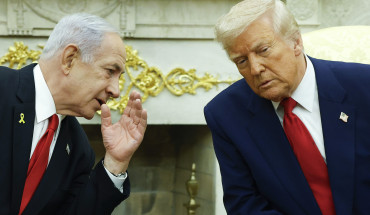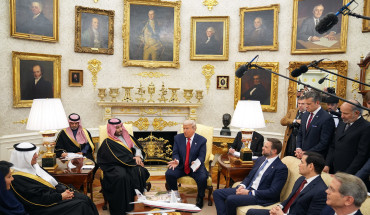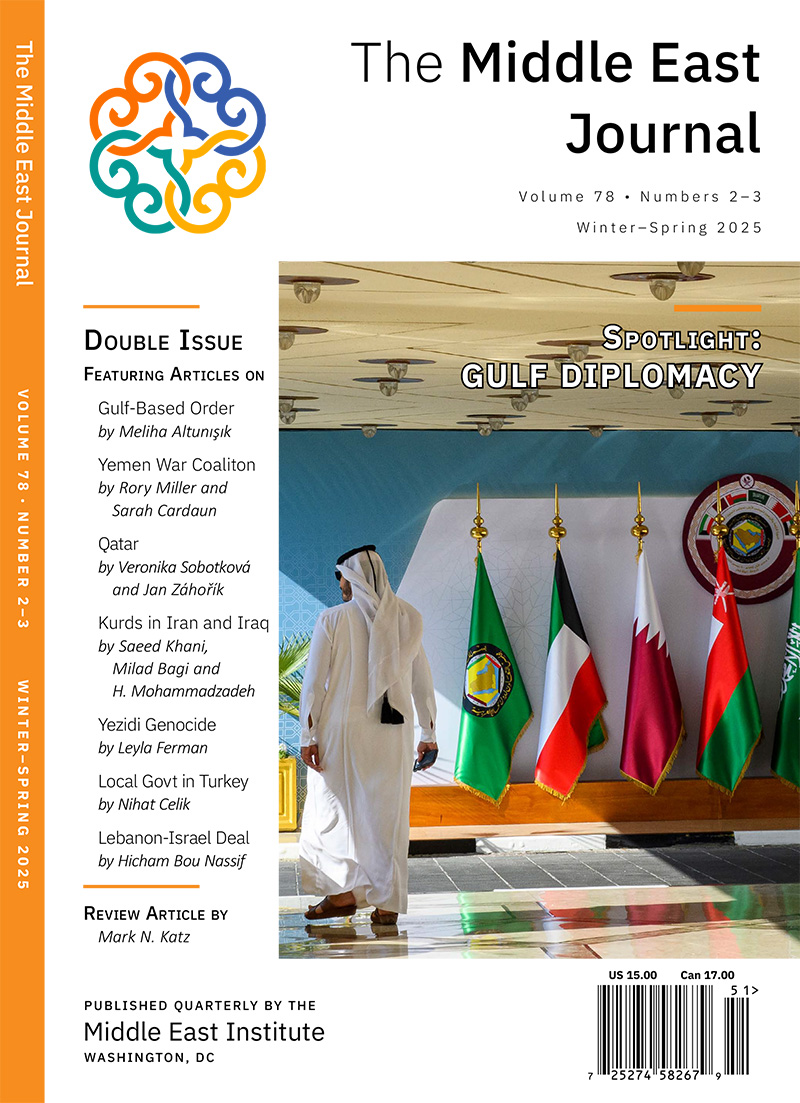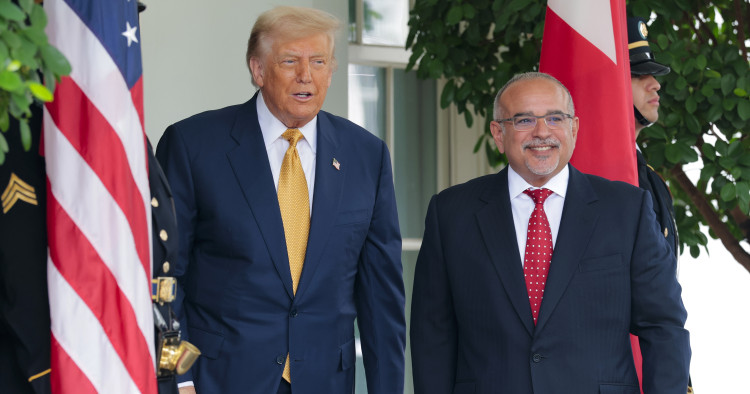Probably few if any Middle East analysts had Israeli airstrikes targeting key government installations of the Syrian state on their summer 2025 bingo cards — especially given that President Donald Trump and many of the United States’ Arab partners had spent months building a framework to support the de facto Syrian government’s ability to stand on its own. And yet that is precisely what happened on Wednesday, as Israeli jets hit Syria’s military headquarters and an area near the presidential palace in Damascus.
Such is the way of the world these days, it seems, especially in the Middle East, where regional tectonic plates continue to shift during a period of uncertainty, in part made more so by the least predictable president in America’s 249-year history. What is more certain is the region’s unyielding prominence on the second Trump administration’s agenda: in recent days, the US president met with Israel’s prime minister, Saudi Arabia’s defense minister, and the leaders of Qatar and Bahrain.
But on the bigger playing field of geopolitics, the main question that looms is where the Trump administration will land in its ongoing efforts to throw America’s economic weight around and gain leverage with friend and foe alike.
Trump falls short of ending wars while stumbling toward a new global tariff framework
The big-ticket item on Trump’s second-term global agenda is his trade war with most of the rest of the world. His administration started issuing tariff notices to countries even as it continued trade talks with key economic powers like the European Union and India. Reportedly, Trump is considering a tariff rate of 10-15% for more than 150 countries.
Tariff revenues have soared during Trump’s second term, but the overall lack of policy clarity has added to the turmoil in the global markets, prolonged concerns about inflation, and complicated relationships with key US international partners. The biggest unresolved trade relationship is with Beijing — Trump has softened his tone in recent weeks, even as the broader US policy approach on China remains unclear, as Financial Times columnist Ed Luce pointed out on my July 15 podcast, Taking the Edge Off the Middle East.
The high aspirations that Trump had to end Russia’s war against Ukraine have not come to fruition, and this week saw the president changing tack on that front. In a meeting with North Atlantic Treaty Organization (NATO) Secretary-General Mark Rutte, Trump outlined a more “aggressive” plan to provide Ukraine with weapons built by US industry and financed by European countries; the transfers would be coordinated by NATO. The broader diplomatic strategy for ending the war remains unclear.
While these major events swirled on the global stage, the Trump administration continued to gut key national security institutions through administrative moves and more budget cuts. Secretary of State Marco Rubio sent out notices last Friday informing 1,100 civil servants and 250 foreign service officers of their termination as part of the broader reorganization of the State Department and downsizing of the federal bureaucracy.
Unfinished business on major files in the Middle East: Iran and the Gaza war
As the Trump administration continues its aggressive campaign to unilaterally disarm the United States in the diplomatic realm, two strategic issues remain unresolved in the Middle East: Iran and the Gaza war.
More reports emerged that last month’s military operation by Israel against Iran, a campaign that the United States joined for one night, has badly damaged only one of three nuclear sites and that Iran could resume nuclear enrichment in a matter of months if the regime chooses to do so. Many questions remain unresolved with Iran, including whether what the world is witnessing now is just a pause in an unsettled military campaign or whether a diplomatic pathway to a new deal will be forged. Beyond the nuclear issue, concerns persist about Iran’s far-reaching terrorist network and its support to actors like the Houthis, who continue to present a threat to regional and global security despite Trump’s separate deal with the Yemeni militia group forged in May.
Efforts to secure a new cease-fire in the Israel-Hamas war, nearing its two-year mark, still continue in Doha and Cairo. Trump’s Middle East envoy Steve Witkoff engaged in more talks with senior Qatari officials and Israeli Minister of Strategic Affairs Ron Dermer at the White House. But there are not yet clear signs of a breakthrough from either these discussions or the visit Trump had on July 16 with Qatar’s prime minister.
The human security situation for the vast majority of Palestinians in Gaza remains dire as Israelis worry about the fate of the hostages still held by Hamas. In a Middle East Institute webinar on what is needed to end the Gaza war, the two Palestinian and Israeli analysts both highlighted the lack of long-term vision and leadership that is at the core of the challenge of breaking the deadlock to end this war, bring the hostages home, and open the floodgates of food and aid to millions of Palestinians.
The incident this week in Syria as well as the unfinished business of US policy in the Middle East on some key strategic issues all raise questions about whether Washington is driving events toward some clear end game or whether it is once again just responding to the plays being run by actors in the region.
Brian Katulis is a Senior Fellow at the Middle East Institute.
Photo by Anna Moneymaker/Getty Images
The Middle East Institute (MEI) is an independent, non-partisan, non-for-profit, educational organization. It does not engage in advocacy and its scholars’ opinions are their own. MEI welcomes financial donations, but retains sole editorial control over its work and its publications reflect only the authors’ views. For a listing of MEI donors, please click here.













